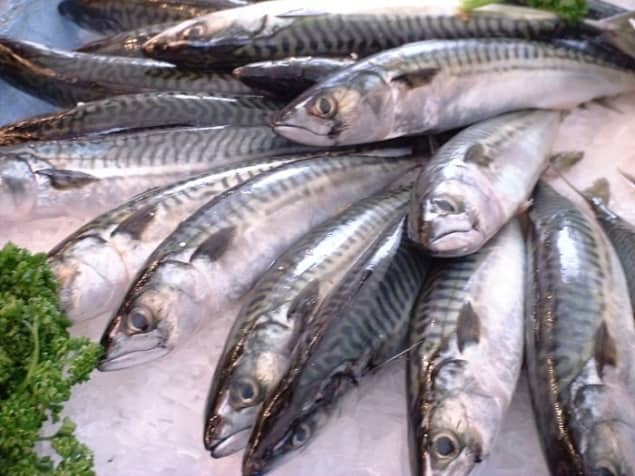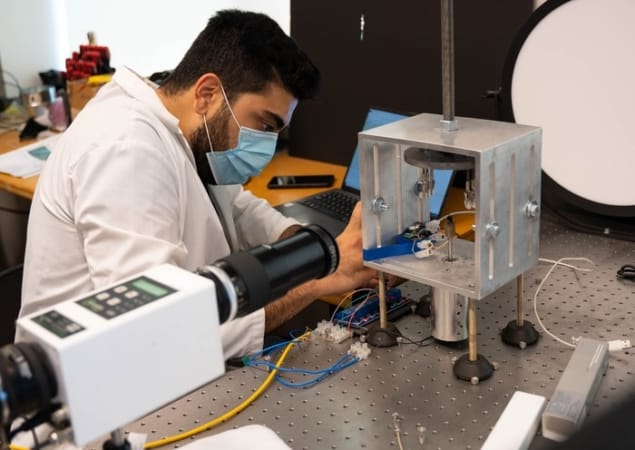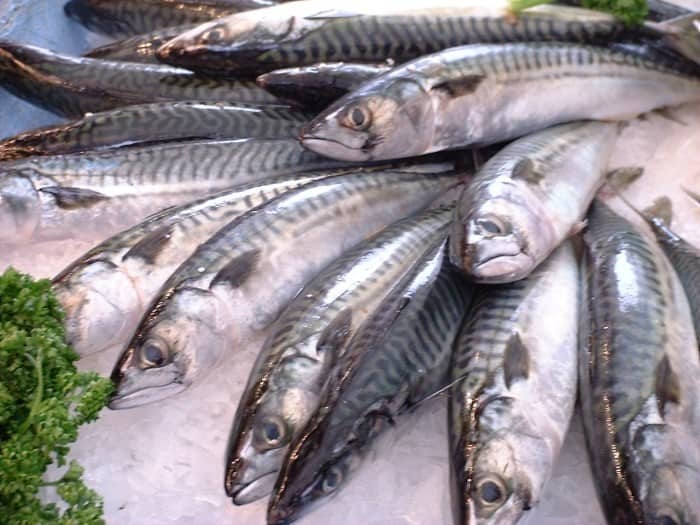
Materials and nanotechnology have long attracted some of the best physicists in academia and industry. This year saw some fascinating research done in this field, and in particular work that focused on natural materials and the environment. Here is a selection of some of our favourite materials and nanotechnology research in 2021.
Food spoilage is an important health and environmental issue and this year Tae Jung Park and colleagues at Chung-Ang University in South Korea have used quantum dots to reveal when fresh fish has begun to spoil. Their technique targets odourless histamine, which is produced when some types of fish go off and can trigger nasty allergic reactions in some people. The team’s detector comprises carbon quantum dots that are coated with chemicals that are removed if the dots come into contact with histamine from fish. This increases the optical fluorescence of the dots, causing them to light up when irradiated with ultraviolet light. The team is now adopting the technique for other chemicals related to spoilage as well as medical applications.
The world produces than 40 million tonnes of electronic waste each year, yet only about 20% of this e-waste is recycled. Improving on this is an environmental imperative as well as a commercial opportunity. This year, a team at Rice University in the US led by James Tour developed a “flash Joule heating” method to recover metals like rhodium, palladium gold and silver from e-waste. The technique was first used by the team to create graphene from waste food and plastic. It involves vaporizing metals a flash chamber by applying a brief (less than 1 s), intense pulse of electrical current to the waste, rapidly heating it to 3400 K. The metals are then captured from the vapour and further refined in an overall process that is described as quicker and cleaner than existing methods.
Today, physics is undergoing a second quantum revolution, with new technology allowing scientists to study ever more weird and wonderful systems. So perhaps it’s not surprising that physicists at Rutgers University in the US are claiming that quantum materials known as Mott insulators can “learn” to respond to external stimuli in a way that mimics animal behaviour. Subhasish Mandal and colleagues studied the Mott insulator nickel oxide. When they monitored how the material’s electrical conductivity changes as the concentration of its atomic defects is reversibly modulated using external stimuli such as oxygen, ozone and light, they found that it mimics non-associative learning seen in living creatures. Mandal says, “We find that nickel oxide insulators, which historically have been restricted to academic pursuits, might be interesting candidates to be tested in the future for brain-inspired computers and robotics.”

Some industries are harder to decarbonize that others, and aviation is proving to be a difficult one. While interest is growing in electric aeroplanes, much of the current environmental focus is on making fossil-fuel driven aircraft more energy efficient. This year, Sepehr Mosadegh and colleagues at the University of British Columbia Okanagan Campus and Zentek in Thunder Bay Ontario have shown that the addition of graphene oxide nanoparticles to liquid ethanol boosts the burning rate of the fuel by up to 8.4%. They say this improvement is the result of the increased atomization of the fuel – the creation of tiny droplets that burn very efficiently. The team says that aircraft engines that run on nanoparticle-doped fuels could emit lower amounts of carbon; while simultaneously becoming more powerful.
Wood is a fantastic material with a wide range of useful properties and applications. What is more, it locks in atmospheric carbon for its lifetime and can be produced in a sustainable way. However, there are some things that natural wood cannot do such as be moulded like metals and plastics. Shaoliang Xiao, Bing Hu and colleagues at the University of Maryland, have shown how useful components can be made by breaking down the molecular structures of wood cell walls, and then moulding the material into desirable shapes. The researchers shaped flat sheets of hardwood into versatile 3D structures: including a honeycomb composite material. This structure was about six times stronger than the original wood – giving it a similar tensile strength to aluminium alloys, but with a far lower density.

We are seeing a growing number new materials made by processing wood, and another one that caught our eye in 2021 was the use of a fungus to make wood much more piezoelectric – and therefore capable of generating useful amounts of electricity. Ingo Burgert, at ETH Zurich, and his colleagues infected balsa wood with the white rot fungus Ganoderma applanatum. After ten weeks they found that the wood could be compressed much more than uninfected wood, but would also return to its original shape. What is more, this compression generated a nearly 60-times higher voltage than untreated wood. Nine of the decayed-wood blocks connected in parallel were able to power an LED when compressed. Energy-generating floors could be one application, say the researchers.
Nature is clearly a great inspiration for materials scientists and shellfish such as mussels are no exception. These creatures fix themselves to surfaces such as rocks, ships and water-inlet pipes with a tenacity that puts superglue to shame. So, it is no surprise that researchers such as Tobias Priemel at McGill University in Canada are interested in how mussels mix chemicals together the create their glue. His team found that the mollusks use a network of microchannels to combine a liquid protein with metal ions to form sticky threads called byssus, which is the “beard” that some mollusks use to stick to things. Further research could point to ways of mimicking this process to create artificial byssus. Priemel and colleagues also want to find out why mussels rely on the rare metal vanadium to create the threads.

Physics World‘s Breakthrough of the Year coverage is supported by Bluefors, a leading supplier of cryogen-free dilution refrigerator measurement systems with a strong focus on the quantum computing and information community. Our aim is to deliver the most reliable and easy to operate systems on the market which are of the highest possible quality.
